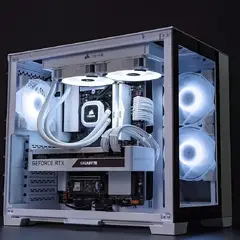Advice regarding a NAS I just built
12 hours ago, HeLiOn said:Now after I gave it a thought, I can definitely see myself using this unit for other things (small game servers and such), so I'll be looking into Linux.
Is there a version that works with no UI, just like FreeNAS, on which you also install cockpit? Sorry, I really know nothing about it.
If you have some materials that can get me started, I'd really appreciate it.
Yeah if you use Ubuntu, the Ubuntu Server install has no desktop environment by default. Then just make sure the SSH Server feature is added during the installation process (i think it is by default). Then you can just use PuTTy or similar to connect to a terminal session remotely for anything you may need outside of the WebUI
If you go this route and you want docker, i'd personally install Docker after Ubuntu is installed, to get the official docker.io rather than docker-ce (open source community edition).
So after Ubuntu is installed, to get it up and running just run
sudo apt remove docker docker-engine docker-ce sudo apt install docker.io sudo apt install cockpit cockpit-docker -y sudo systemctl start docker sudo systemctl enable docker
You may need to allow the port through the firewall, which in Ubuntu would be
sudo ufw allow 9090/tcp
Everything should be installed then, and persistant through a reboot, then you can access the Cockpit UI at http://myservername:9090
















Create an account or sign in to comment
You need to be a member in order to leave a comment
Create an account
Sign up for a new account in our community. It's easy!
Register a new accountSign in
Already have an account? Sign in here.
Sign In Now